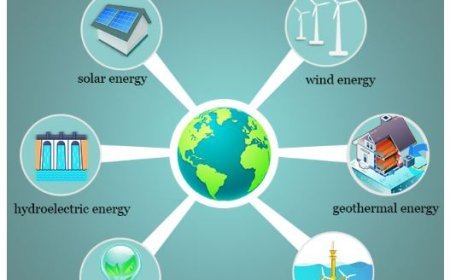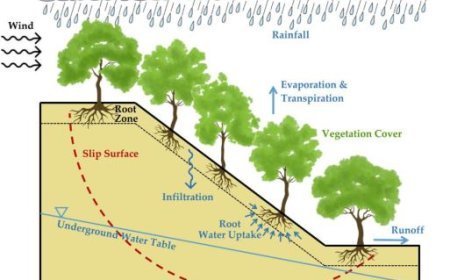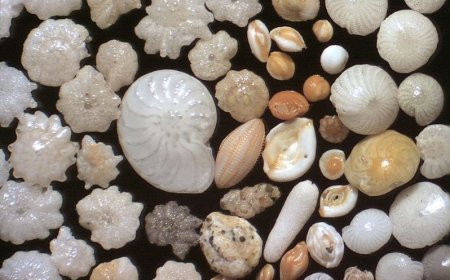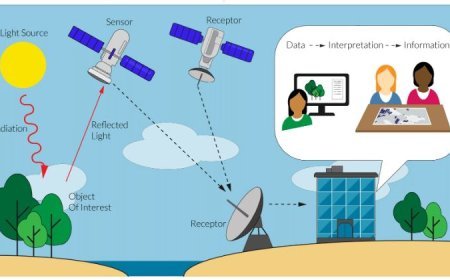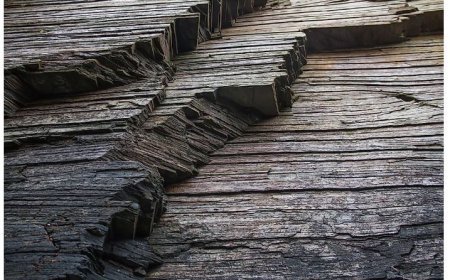GEOSYNCLINE THEORY
Geosyncline theory - basins filled with sediment, uplifted into mountain ranges.
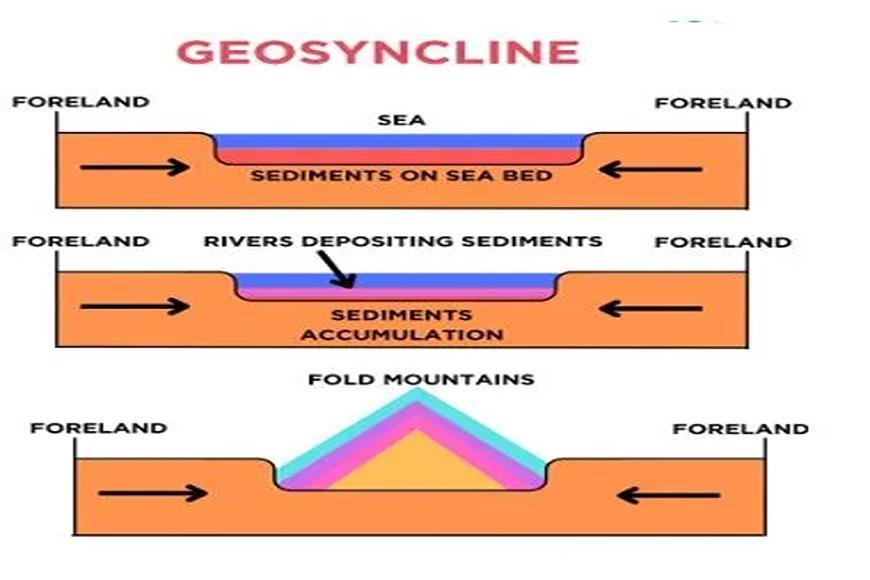
GEOSYNCLINE THEORY
- Geosyncline theory was a scientific idea created in the late nineteenth and early twentieth centuries to explain the development of mountain ranges and the distribution of rock formations on the Earth's surface.
- Geosynclines, according to this hypothesis, were huge depressions or basins in the Earth's crust that filled with sediment over millions of years.
- The weight of the underlying strata forced the basin to sink further into the earth's mantle as the silt accumulated.
- The pressure and heat from the mantle eventually led the silt to metamorphosis, fold, and rise, resulting in mountain ranges.
- In the early twentieth century, the geosyncline idea was popular, and it was employed to explain the development of several mountain ranges throughout the world.
- However, the theory of plate tectonics, which explains the movement of the Earth's crust and the development of mountain ranges through the collision of tectonic plates, has now supplanted it.
- The late-nineteenth-century American geologist James Hall created geosyncline theory after noticing parallels in the rock formations of the Appalachian Mountains and the European Alps.
- Other geologists later expanded on the notion, notably Eduard Suess, who coined the word "geosyncline" in 1883.
- Geosynclines, according to geosyncline theory, were lengthy, linear depressions or troughs in the Earth's crust, commonly observed around the edges of continents.
- These troughs were considered to be made of sedimentary rock that had accumulated over millions of years.
- The sediment's weight forced the troughs to sink further into the earth's mantle, resulting in subsidence.
- Because of the pressure and heat from the Earth's centre, the sedimentary layers lithified (converted into rock) as they accumulated.
- Subsequently, the sinking troughs became unstable and began to bend and distort, resulting in the creation of mountain ranges. This is referred to as orogeny.
- The geosyncline idea was largely accepted until the mid-twentieth century, when plate tectonics theory was developed.
- Plate tectonics is the theory that explains the movement of the Earth's lithospheric plates and the development of mountain ranges through plate collision and sinking.
- Plate tectonics, which has essentially supplanted the geosyncline hypothesis, gives a more thorough account of mountain formation.
The Concept of Geosyncline Theory and its Development
The Concept of Geosyncline Theory and its Development
- Geosyncline theory is a geological hypothesis created in the late nineteenth and early twentieth centuries to explain mountain range creation and the distribution of rock formations on the Earth's surface.
- The notion was founded on the fact that sedimentary rock strata in mountain ranges were frequently quite thick and featured a diverse spectrum of rock types.
- Eduard Suess, an Austrian geologist, initially proposed the notion of geosynclines in 1883.
- Suess postulated that geosynclines were longitudinal depressions or troughs in the Earth's crust that accumulated sedimentary materials over millions of years.
- He thought the weight of the silt led the troughs to sink further into the earth's mantle, resulting in subsidence.
- Other geologists, like James Hall in the United States and Albert Heim in Switzerland, expanded on the geosyncline idea.
- They saw that mountain ranges frequently exhibited a linear shape, which they ascribed to sedimentary rock folding and rising inside geosynclines.
- In the early twentieth century, the hypothesis gained popularity and was frequently utilised to explain the origin of various mountain ranges throughout the world.
- However, the plate tectonics theory, which provided a more thorough explanation for the movement of the Earth's lithospheric plates and the formation of mountain ranges, eventually supplanted the geosyncline hypothesis.
- The idea of geosynclines is still a crucial tool in geology, even though plate tectonics theory has supplanted it.
- Geosynclines are still being explored to better understand sedimentary basin formation and the development of the Earth's crust.
- Furthermore, the creation of geosyncline theory paved the way for additional developments in the understanding of plate tectonics and geological processes on Earth.
What's Your Reaction?









